
Francisco Franco Bahamonde was a Spanish military general who led the Nationalist forces in overthrowing the Second Spanish Republic during the Spanish Civil War and thereafter ruled over Spain from 1939 to 1975 as a dictator, assuming the title Caudillo. This period in Spanish history, from the Nationalist victory to Franco's death, is commonly known as Francoist Spain or as the Francoist dictatorship.
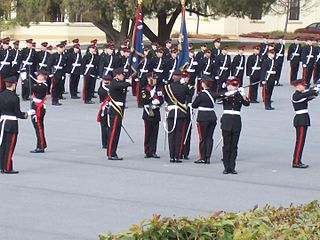
A military academy or service academy is an educational institution which prepares candidates for service in the officer corps. It normally provides education in a military environment, the exact definition depending on the country concerned.
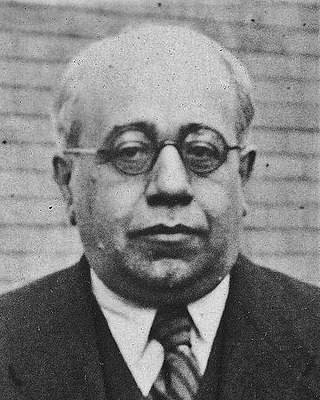
Manuel Azaña Díaz was a Spanish politician who served as Prime Minister of the Second Spanish Republic, organizer of the Popular Front in 1935 and the last President of the Republic (1936–1939). He was the most prominent leader of the Republican cause during the Spanish Civil War of 1936–1939.
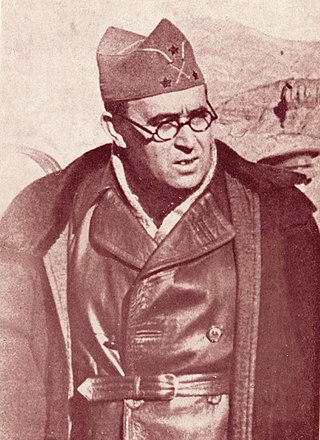
Vicente Rojo Lluch was Chief of the General Staff of the Spanish Armed Forces during the Spanish Civil War.

Juan Yagüe y Blanco, 1st Marquis of San Leonardo de Yagüe was a Spanish military officer during the Spanish Civil War, one of the most important in the Nationalist side. He became known as the "Butcher of Badajoz" because he ordered thousands killed, including wounded Republican soldiers in the hospital.
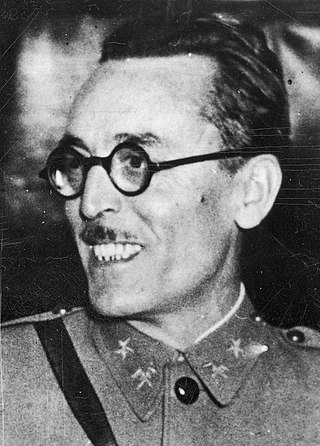
Segismundo Casado López was a Spanish Army officer; he served during the late Restoration, the Primo de Rivera dictatorship and the Second Spanish Republic. Following outbreak of the Spanish Civil War he sided with the Republicans, gradually rising to commander of the Army of the Centre. He is best known as leader of the coup against the government of Juan Negrín; its objectives were preventing a Communist takeover and terminating fratricidal bloodshed during the war, considered already lost. The rebels seized control of the Republican zone; in their quasi-government Casado served as the minister of defense. Negotiations with the Nationalists failed; Casado went on exile, first to Britain and from 1947 to Latin America, returning to Spain in 1961.
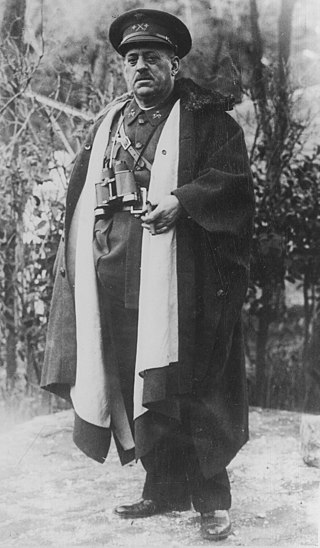
José Sanjurjo y Sacanell was a Spanish general who was one of the military leaders who plotted the July 1936 coup d'état that started the Spanish Civil War.

The Military Academy of Agulhas Negras is the biggest among several schools of formation of combatant officers of the Brazilian Army. It originated in 1792 with the creation of the Royal Academy of Artillery, Fortification and Drawing, the first military school of the Americas, in the city of Rio de Janeiro. Today the Academy is located in the city of Resende, in the state of Rio de Janeiro.

Infante Alfonso of Spain was the younger brother of King Juan Carlos I of Spain. He was also the youngest son of Infante Juan, Count of Barcelona and Princess María de las Mercedes of Bourbon-Two Sicilies, and the grandson of King Alfonso XIII. He died young at 14 from a shot by Juan Carlos' gun, but the circumstances of his death remain unclear to this day.
The background of the Spanish Civil War dates back to the end of the 19th century, when the owners of large estates, called latifundios, held most of the power in a land-based oligarchy. The landowners' power was unsuccessfully challenged by the industrial and merchant sectors. In 1868 popular uprisings led to the overthrow of Queen Isabella II of the House of Bourbon. In 1873 Isabella's replacement, King Amadeo I of the House of Savoy, abdicated due to increasing political pressure, and the short-lived First Spanish Republic was proclaimed. After the restoration of the Bourbons in December 1874, Carlists and anarchists emerged in opposition to the monarchy. Alejandro Lerroux helped bring republicanism to the fore in Catalonia, where poverty was particularly acute. Growing resentment of conscription and of the military culminated in the Tragic Week in Barcelona in 1909. After the First World War, the working class, the industrial class, and the military united in hopes of removing the corrupt central government, but were unsuccessful. Fears of communism grew. A military coup brought Miguel Primo de Rivera to power in 1923, and he ran Spain as a military dictatorship. Support for his regime gradually faded, and he resigned in January 1930. There was little support for the monarchy in the major cities, and King Alfonso XIII abdicated; the Second Spanish Republic was formed, whose power would remain until the culmination of the Spanish Civil War. Monarchists would continue to oppose the Republic.
Eugenio Vegas Latapie (1907–1985) was a Spanish monarchist writer, activist and conspirator who was noted for the extremism of his monarchism. A native of Irun, he was a leading member of the Acción Española.
Unión Militar Española was a pro-fascist secret society of officers of the Spanish Republican Armed Forces involved in a conspiracy to bring about the restoration of the monarchy during the 1930s. The majority of members of this organization became part of the nationalist forces during the Spanish Civil War.

Francisco Gómez-Jordana y Sousa, 1st Count de Jordana, was a Spanish soldier and politician who served as Minister of Foreign Affairs during the rule of Francisco Franco.

The Spanish coup of July 1936 was a military uprising that was intended to overthrow the Spanish Second Republic but precipitated the Spanish Civil War; Nationalists fought against Republicans for control of Spain. The coup was organized for 18 July 1936, although it started the previous day in Spanish Morocco. Instead of resulting in a prompt transfer of power, the coup split control of the Spanish military and territory roughly in half. The resulting civil war ultimately led to the establishment of a nationalist regime under Francisco Franco, who became ruler of Spain as caudillo.

The Spanish Republican Army was the main branch of the Armed Forces of the Second Spanish Republic between 1931 and 1939.

The symbols of Francoism were iconic references to identify the Francoist State in Spain between 1936 and 1975. They serve as visual illustrations for the ideology of Francoist Spain. Uniforms were designed for men and women that combined elements of the earlier Falangist and Carlist uniforms. The state developed new flags and escutcheons based on the traditional heraldry of the monarchy, but now associated with the state. The emblem of five arrows joined by a yoke was also adopted from earlier Spanish symbology, but after 1945 the arrows always pointed upward. This emblem appeared on buildings, plaques and uniforms.

Gonzalo Queipo de Llano y Sierra was a Spanish Army general. He distinguished himself quickly in his career, fighting in Cuba and Morocco, later becoming outspoken about military and political figures which led to his imprisonment, removal from posts and involvement in plots against Spanish governments. He was a Nationalist military leader during the Spanish Civil War under Francisco Franco, gaining the soubriquet "El general de la radio" for his threats and explicitness on air. Under his control of southern Spain, tens of thousands of Spaniards perished as part of the Nationalists' White Terror. In his post-war roles he was effectively sidelined by Franco.

The Alhucemas landing was a landing operation which took place on 8 September 1925 at Alhucemas by the Spanish Army and Navy and, in lesser numbers, an allied French naval and aerial contingent, that would put an end to the Rif War. It is considered the first amphibious landing in history involving the use of tanks and massive seaborne air support. Alhucemas is seen as a precursor of the Allied amphibious landings in World War II, and the first successful combined operation of the 20th century.
José Cuesta Monereo was a senior Spanish army officer, regarded as the planner of the Spanish coup of July 1936 in Seville at the beginning of the Spanish Civil War, and thereafter other areas, initially under the command of general Gonzalo Queipo de Llano. The plans resulted in the abuse, torture and murder of thousands of local people.

The military reform of Manuel Azaña was the set of decrees approved between April and September 1931 by the Provisional Government of the Second Spanish Republic and the subsequent laws approved by the Courts at the proposal of the Minister of War Manuel Azaña, a position that he held simultaneously with that of President of the Government since October 1931, and whose objective was to modernize and democratize the Spanish Army as well as to put an end to military interventionism in political life. Azaña's reform was the only one of those approved during the first biennium that was not changed by the center-right governments of the second.
















